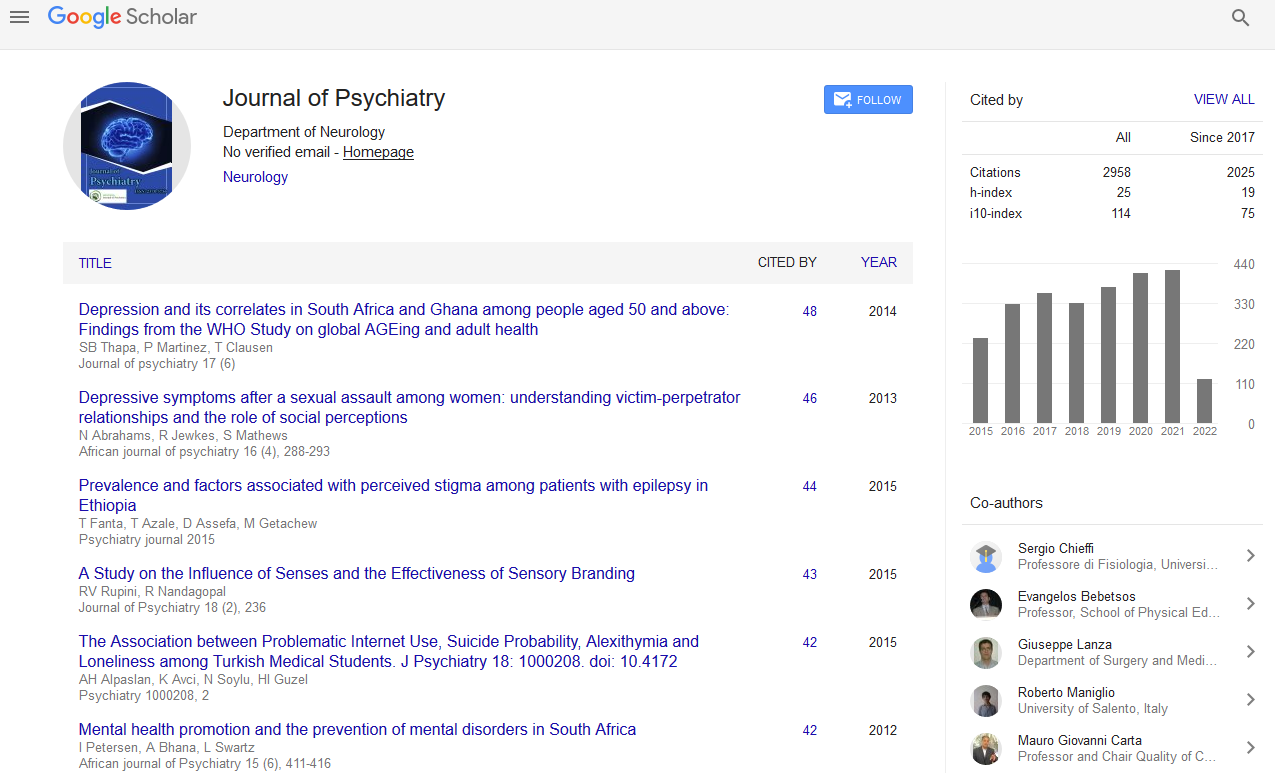PMC/PubMed Indexed Articles
Indexed In
- RefSeek
- Hamdard University
- EBSCO A-Z
- OCLC- WorldCat
- SWB online catalog
- Publons
- International committee of medical journals editors (ICMJE)
- Geneva Foundation for Medical Education and Research
Useful Links
Share This Page
Open Access Journals
- Agri and Aquaculture
- Biochemistry
- Bioinformatics & Systems Biology
- Business & Management
- Chemistry
- Clinical Sciences
- Engineering
- Food & Nutrition
- General Science
- Genetics & Molecular Biology
- Immunology & Microbiology
- Medical Sciences
- Neuroscience & Psychology
- Nursing & Health Care
- Pharmaceutical Sciences
Abstract
Correlation between burnout syndrome and psychological symptoms among teachers
Simin dokht Kalani
Psychosomatic disorders and symptoms that correlate with the so-called burnout syndrome turned out to be the main cause of increasing rates of premature retirement of school teachers. The aim of this study was to evaluate the relation between occupational burden and psychological strain of teachers who are still in work. A sample of 408 teachers at ten schools in Iran was evaluated. To determine the styles of coping with occupational burden we used the measure of coping capacity questionnaire (MECCA). To analyse the psychopathological and psychosomatic symptom load we applied SCL 90 R questionnaire. According to the MECCA questionnaire, 32.5% of the sample suffered from burnout (type B), 17.7% suffered severe strain (type A), 35.9% showed an unambitious (type S) and 13.8% showed a healthy-ambitious coping style (type G). Burnout was significantly higher among women, divorced teachers and teachers working part-time. As part of the MECCA, teachers were asked to rate what they regarded as the strongest factor resulting in occupational burden. Teachers indicated that, besides high numbers of pupils in one class, they regarded destructive and aggressive behaviour of pupils as the
primary stress factor. According to the SCL 90 R, 20% of the sample showed a severe degree (defined as >70 points in the SCL90R GSI) of psychological and psychosomatic symptoms. MECCA type B (burnout) correlated significantly with high psychological and psychosomatic symptom load according to the SCL90R. In school teachers, burnout syndrome, a construct that derived from occupational psychology and occupational medicine, is significantly correlated with psychological and psychosomatic symptoms. Teachers rate destructive and aggressive behaviour of pupils as the primary stress factor.
Published Date: 2020-09-17;


